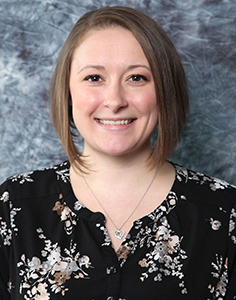When striving for independence with individuals with Autism Spectrum Disorder (ASD), families, Board Certified Behavior Analysts (BCBAs), and other professionals may immediately think of decreasing problem behavior such as screaming or off-task behaviors or increasing specific skills such as homework completion or washing their hands. However, a social skills repertoire and building social competence may be among the most important and valuable set of skills to teach an individual with ASD. Social competence, as presented by Romanczyk, White, and Gillis (2005), is the ability to effectively interact with other people, which can open so many doors beyond just being able to complete daily activities. As social skills develop, an individual has the opportunity to meet a variety of new contingencies and come in contact with novel types of reinforcement, possibly peaking new interests!

Jennifer Croner, MSEd, BCBA, LBS-PA

Samantha Smith, MSEd, BCBA, LBS-PA
Rosales‐Ruiz and Baer (1997) initially presented the concept of behavioral cusps as behavior that “brings the organism’s behavior into contact with new contingencies that have even more far-reaching consequences.” The individual skills that combine to form a social skills repertoire can be considered some of the most fundamental behavioral cusps an individual can acquire. For example, an increase in social awareness of others in the environment may lead to acquiring new skills through observational learning or even the development of new friendships. Not only can social skills increase appropriate behavior leading to better outcomes but acquiring a repertoire of various social skills can decrease challenging behavior as well. For instance, the reduction of stereotypic behavior such as hand flapping may be observed when an individual becomes socially aware of others engaging in different behavior during down time, or the individual may simply be more involved in the social activity, therefore reducing the amount of time he has to engage in stereotypic behavior.
Involvement in social activities allows for an increase in verbal and nonverbal communication skills as well. Requesting can be incorporated into a variety of activities, from more practice of newer targets to elaboration on basic skills (e.g., using a full sentence, asking for the bigger cup or the blue marker). Often, targeting requesting within social activities is more successful because it capitalizes on the child’s naturally occurring motivation and maintains the behavior by incorporating natural sources of reinforcement. Social activities can also be used to prompt mastered requests with peers, or to contrive opportunities for requests by providing some parts of a toy or game, but not all, or pausing an ongoing action to wait for a request. Other communicative or basic learning behaviors that can be targeted during social activities include tacting, listener behavior, and imitation. Tacts can often start as echoic behavior when modeling language about an activity (e.g., labeling farm animals while using an echoic prompt could promote spontaneous tacts when playing with safari animals). This can also be a time to work on generalization of tacts by asking the individual to name recently mastered items. For listener behavior, the child may point to named items by the speaker or match items, such as with a puzzle or a game like Perfection©. Social activities also provide an opportunity to continue to grow the individual’s generalized imitative repertoire, especially during pretend play for younger learners.
A more structured social activity may be a card game like Uno™. This provides great opportunities to work on requesting for a wild card color, or for information, such as asking who has the next turn. Individuals can also tact colors or numbers, or work on match-to-sample skills. Uno™ has an outlined set of rules, allowing individuals to work on following instructions, like skipping a turn or reversing the order of play. This activity can be adjusted depending on the age of the participants – one may wish to target good sportsmanship by modeling the appropriate verbal behavior of a winner or loser. A less structured example which can include the same types of social skills is a group painting activity. Here, one can work on mands for missing items, such as a paintbrush or a preferred paint color. It’s also a fantastic way to target sharing or turn taking among peers. Painting could be used to target imitation of a peer model, or to promote conversational volleys about each individual’s picture. Note how in all these examples, a variety of social skills are targeted; the specific skills targeted should always be individualized to each learner.
As discussed, social activities provide an opportunity for individuals to generalize skills from a more structured teaching format to the natural environment, as well as maintain previously acquired skills. A key component of teaching social skills though, is to target developmentally appropriate skills (e.g., fourteen-year-old boys would likely prefer to play video games or go biking than play Candy Land™ or blow bubbles outside). Examples provided thus far have targeted leisure times for children or adolescents, although social skills for older individuals in the workplace are just as critical to ensure a successful adulthood and possible employment. A recently published article evaluated the effects of behavioral skills training to teach job-related social skills to adults with ASD (Grob, Lerman, Langlinais, & Villante, 2019). The social skills targeted included responding appropriately to feedback and asking a supervisor for a task model; the treatment package included verbal explanations, modeling, and role-play with feedback. The study found that generalized responding across social skills rarely emerged, and that stimulus prompts were necessary for generalization of these skills to the job setting. These authors noted the importance of identifying prompt formats that would be easily transferrable to the actual job site.
This study exemplifies two important notions related to teaching within social activities. The first is the importance of programming for generalization from the outset, rather than a “train and hope” approach (Stokes & Baer, 1977). The second is to recognize that individuals are acquiring a social skills repertoire, and research suggests that generalization of these skills is limited. Therefore, clinicians and parents must continue to teach new skills to add to this repertoire. Promoting social skills during all daily activities is a productive way to plan for generalization from the onset of teaching. This may also assist in tapping into natural sources of reinforcement as the individual may contact a variety of social reinforcers from many different people across various activities. Lastly, as the individual receives reinforcement during or following interactions with their family and caregivers, reinforcement is also provided for those family members and caregivers. This cycle of reinforcement can lead to more positive interactions across the family unit as well as encourage more community involvement as more skills are acquired. Some social outlets to look for within the community that could assist in promoting the generalization and maintenance of skills initially targeted at home, in school, or at a job may be specific social skills groups with peers of similar age and functioning level, sensory friendly activities, or groups at the local YMCA. These social outlets may directly teach new skills, and also provide a way to reach new peers and novel activities that may create new interests for those that may have restricted or limited interests!
Samantha Smith, MSEd, BCBA, LBS-PA, is Assistant Clinical Supervisor, Jennifer Croner, MSEd, BCBA, LBS-PA, is Clinical Supervisor, Kristen Daneker, MS, BCBA, LBS-PA, is Director, and Shannon Vitelli, MEd., BCBA, LBS-PA, is Executive Director at Exceptional Learning, LLC.
If you would like more information about Exceptional Learning, LLC, please contact our office via phone at (610) 287-4000 or visit our website at www.exceptional-learning.com.
References
Grob, L.M., Lerman, D.C., Langlinais, C.A., & Villante, N.K. (2019). Assessing and teaching job-related social skills to adults with autism spectrum disorder. Journal of Applied Behavior Analysis, 52(1), 150-172.
Romanczyk, R. G., White, S., & Gillis, J. M. (2005). Social skills versus skilled social behavior: A problematic distinction in autism spectrum disorders. Journal of Early and Intensive Behavior Intervention, 2(3), 177.
Rosales‐Ruiz, J., & Baer, D. M. (1997). Behavioral cusps: A developmental and pragmatic concept for behavior analysis. Journal of applied behavior analysis, 30(3), 533-544.
Stokes, T.F., & Baer, D.M. (1977). An implicit technology of generalization. Journal of Applied Behavior Analysis, 10(2), 349-367.





